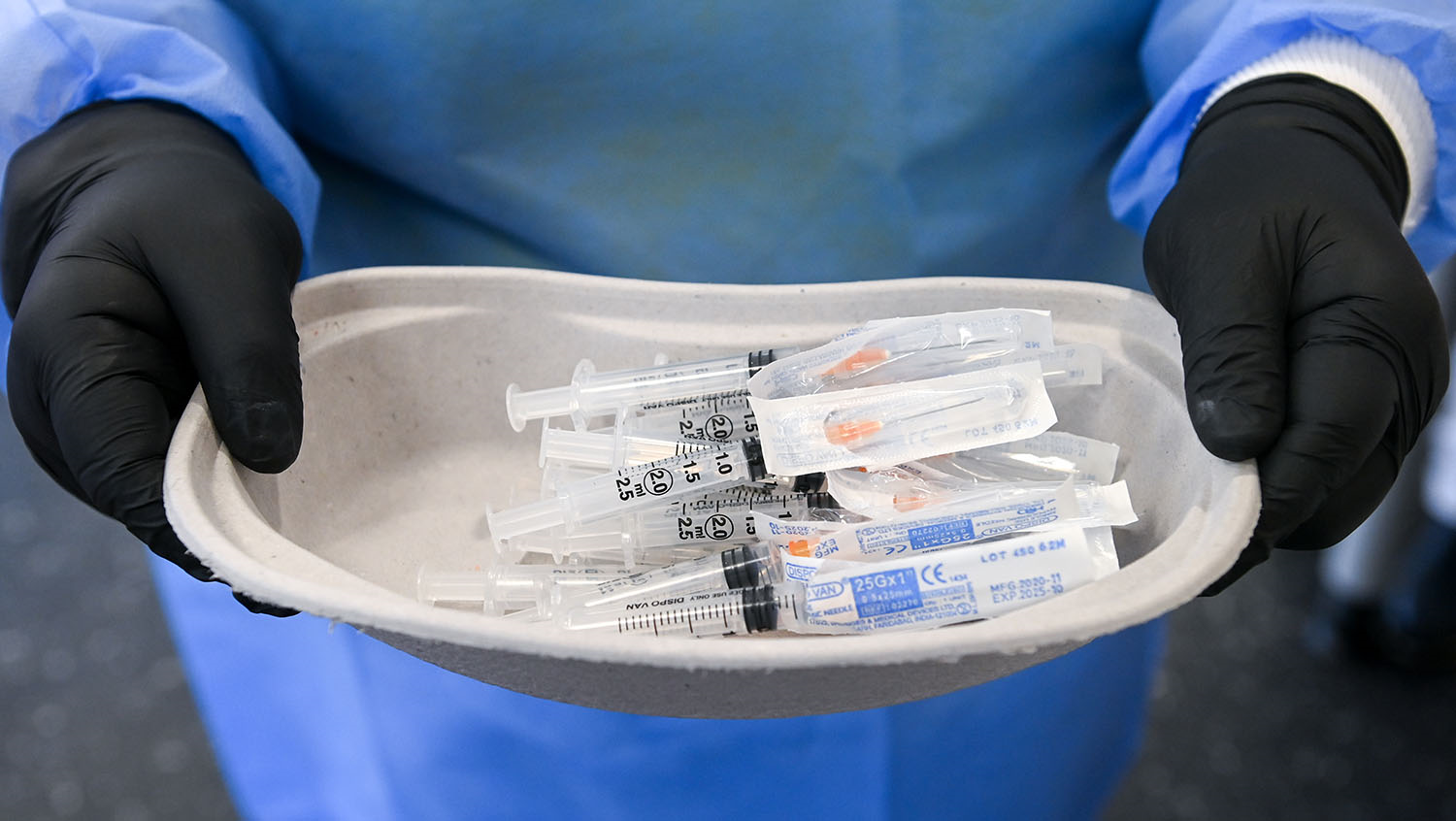Why We Should Prioritize People with Substance Use Disorder for COVID-19 Vaccination
January 20, 2021

Getty Images
Practical challenges and stigma must be overcome for such an effort to succeed, but success could yield a blueprint for future care.
Joshua Barocas, MD, an infectious diseases physician at Boston Medical Center, argues in a recent New England Journal of Medicine article that, when it comes to COVID-19 vaccination priority, people with substance use disorders should be among the first. Not only would it help individuals at high risk for COVID-19, but it would also benefit public health and, potentially, build a blueprint for future care for people with limited access to healthcare and resources.
Barocas spoke to HealthCity about the reactions to his article, the importance of vaccination, and the challenges of reaching people with SUD, building trust, and battling stigma.
HealthCity: What is your reasoning behind why we should be prioritizing people with substance use disorders for the COVID-19 vaccine?
Joshua Barocas, MD: It makes sense to include this population in the high-risk category so that they receive early vaccination.
The simple fact is that people with SUD, specifically opioid use disorder, have been shown to have worse outcomes when it comes to COVID-19 — higher risk for the disease, for severe symptoms, for hospitalization, and for death from COVID-19. Second, there is so much overlap between SUD and other structural determinants of health, including incarceration, housing instability, and domestic and sexual violence, and these other factors also place people at higher risk.
And even beyond the evidence-based argument that they are high-risk, the conditions this population faces make for increased transmission throughout the entire community, making it harder to control the spread. So, vaccinating this population actually makes population health sense as well.
HC: There are challenges for reaching people with SUD for vaccination: they can be disconnected from the healthcare system, have distrust in the systems, and may not be stably housed. What strategies could help make a vaccination effort successful?
JB: First, we have to contend with the fact that we as healthcare professionals have not done a great job at building trust with this population. We continue to criminalize and stigmatize substance use. We blame the person with the chronic disease. So, we need to develop trust-building campaigns, utilizing community members who are already trusted — peer navigators, recovery coaches, people who work at syringe service programs and other harm reduction sites.
Second, we need to bring the vaccination programs to where people are. When people may lack access to transportation or to WiFi to get an alert on a phone, instead of saying, “Come to the hospital for your vaccine,” we need to vaccinate at the places people are receiving care, including methadone clinics.
And third, we need to have case managers and social workers there who can address some of the structural issues — for instance, linking people to MassHealth — and make sure higher-level needs are met. If vaccination is offered during the same hours the midday soup kitchen operates, for example, offer food or food vouchers so people don’t have to choose between the vaccine and food.
HC: Regarding trusted members of the community delivering vaccinations, are these people that would need to be newly trained or certified to administer the vaccine?
JB: In some cases, people who are staffing syringe service programs or other harm reduction sites are already trained in some health profession capacity. But this is also an opportunity to provide economic relief to the community. What if we employed and trained a public health workforce to be vaccinators and vaccine ambassadors within the substance use population?
We also need to ensure that the people doing the vaccinating are vaccinated themselves. This cycle of vaccinating the vaccinators is only going to serve us well in building trust and in decreasing vaccine hesitancy.
HC: Do you find distrust or COVID-19 vaccine hesitancy in general among people with SUD?
JB: This is certainly an issue we contend with in this population. A lot of the vaccine hesitancy comes from misinformation. As an example: One Australian vaccine trial — which has now been abandoned, and that vaccine is not in use anywhere — used a protein to stabilize the vaccine, and it’s a protein that’s part of the HIV virus. It doesn’t cause HIV, but in the clinical trials, some people who received the vaccine had false-positive HIV tests. As a result, one of the rumors is that the vaccine gives you HIV — which, of course, is not true, but you can see the kernel of truth it came from.
The people most successful at dispelling these myths are not politicians or even doctors. Some are peer recovery coaches or outreach workers who have reported back to me, saying, “This is something floating around the community among people I know. I spent some time talking with them about it and made sure they understood this wasn’t the case.”
Just an honest discussion, starting with listening, has had the greatest impact. People have specific concerns about the vaccine for themselves, and they just want to be heard. As healthcare providers, we have to listen.
HC: In a NEJM audio interview last month, one of the ideas you mentioned was utilizing empty hotel rooms to place people without stable housing during the three to four weeks between vaccine doses. How would that work?
JB: I don’t think it’s a pie-in-the-sky idea to provide temporary housing, and here’s why. There’s already a precedent throughout the country for using hotels as isolation and quarantine sites, including here in Massachusetts. And it would be beneficial in that it would decrease or remove some other barriers, almost by definition: We wouldn’t need to supply phones and chargers or gather all the tracking information we generally need to get people their second dose.
This plan could actually be used as a moment of stabilization. Case managers and social workers could get people signed up for Medicaid and linked into the system. If people are willing to start treatment for opioid use disorder with medications, those could be initiated on site. In 21 to 28 days, a lot can be done around finding people stable housing, available job services, and more.
HC: What’s been the response to your call for prioritizing this population for early vaccination?
JB: We have data that this is a high-risk condition for severe COVID-19, death, hospitalization, and high transmission, so many public health people actually have strong support for the idea. But there is a pervasive stigma against people with substance use disorders. So many people still see this as a moral failing as opposed to a chronic disease.
Unfortunately, a lot of the discussions right now are about prioritization, as opposed to how we get the vaccines out to people who need it. In all these discussions, we have to look objectively at who’s at risk and what actions will help not just the at-risk population but the larger community. This is a time when following the evidence and ignoring whatever personal beliefs people have will actually do a great amount of good.
HC: If all these hurdles can be overcome for vaccinating people with SUD, could some of that learning be applied to other aspects of care?
JB: Oh my goodness, yes. In everything from routine, yearly vaccines to how we deliver care in general, from medications to setting up appointments, this could effectively change how we approach care in populations that lack access to resources we assume are needed.
Doing it the way that I’ve outlined would put issues like housing, food, and treatment for SUD and mental health at the forefront of the discussion, making these larger “upstream” structural issues and barriers the first step in care, as opposed to the last. Getting someone stable housing, for example, has cascading effects for the rest of their care.
If we begin to really see value in social work and case management — and not just in the “downstream” procedural things that may get the most reimbursement — this could be a very important awakening for the healthcare system.
This interview has been edited and condensed.


